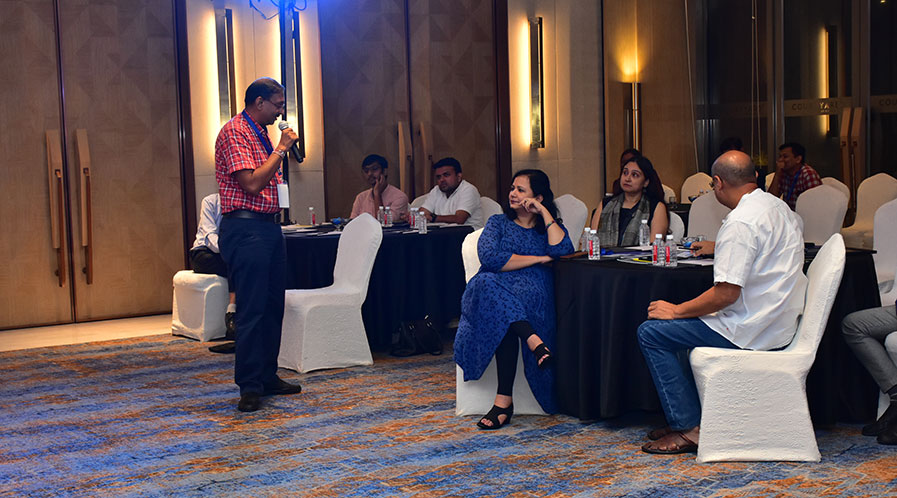Suspended Plumbing Vs Sunken Slabs
Panellists comprising MEP consultants and architects explored the pros and cons of suspended plumbing as well as sunken slabs. The panellists compared the two plumbing systems and gauged their suitability for projects.
Highlighting the increasing construction of high-rise buildings in cities, Anand Tatu, Principal Architect, M/S Anand Tatu Architects, Planners, and Interiors Designers opined, “Integrating services in a vertical building makes the process very complex and that is why experts like plumbing consultants, electrical consultants, or structural consultants have an important role to play here.”
Talking about the aspects of structural elements in both sunken slabs and suspended plumbing, Rasik J Shah, Proprietor, Ami Engineers explained, “Any flaw in the structure or construction will definitely give rise to problems in other services as well. The process involves two levels – one is the supervision of the site and the second is the inspection to be done by the designer or owner. If these two steps are executed properly, then I do not find any flaw with any system.” He called for proper coordination between the architect and the structural engineer to ensure proper execution to alleviate any future problems.
Vatsal C Joshi, Founder Director, Associated Architects India Pvt Ltd talked about the issues in both these plumbing systems, “As architects, we are always looking at solutions which are effective for the end-user. I have experienced walking into bare structures and not being able to make out those are washrooms. There is a gradual shift from sunken slabs to suspended plumbing, and maybe the future holds something else in this field, as the demands and approach change. Irrespective of the choice of plumbing systems, efficient planning and execution is a must, otherwise, the end result will have certain flaws that the end-user has to bear.”

Avni Sikka, Proprietor, Artech Engineering Solutions opined, “Nowadays, buildings are designed in a way where we do not get a lot of space for services. If we lower the beam and accommodate that area for the services, then the services can work pretty well. Eventually, when changes have to be made, it comes back to the overall process of the structural engineer, architect, and plumbing consultants.”
Dipen Mehta, MD, PCS Project Management, MD, Aqua Utility Designs and Management, and Proprietor, Aqua Designs opined, “As a civil engineer, I strongly believe that the structure has to first be safeguarded because the building becomes stable only if the structure is stable. In the case of suspended plumbing, during changes, the repairing is done without considering any civil aspects. The one benefit of suspended plumbing is that there are no changes required in the flooring to repair the system.”
“There is a gradual shift from sunken slabs to suspended plumbing, and maybe the future holds something else in this field, as the demands and approach change. Irrespective of the choice of plumbing systems, efficient planning and execution is a must.”
Giving a background on what made designers and consultants adopt the sunken slabs, Tatu added, “Sunken slabs were initially introduced to avoid stack in the washroom area, therefore, slabs are sunken to accommodate all the pipelines and other plumbing pipes which provide numerous advantages like smoothening the transition line, reducing noise levels. But, certain advantages also gave rise to certain problems because of the use of acid on washroom floor tiles that can damage the joints between these tiles. To resolve this issue, plumbing consultants came up with the concept of suspended plumbing systems.”
Highlighting the advantages of suspended plumbing, Sikka shared, “In case of suspended plumbing, it not only solves plumbing issues, but all MEP Solutions can also work well together in this case. Having leakages in a building is a problem; an even bigger problem is having leakages with electrical conduits in the same ceiling. Given an option, we would like to have suspended plumbing, but below the beam. In 95% of our projects, we generally recommend suspended plumbing systems.”
[Edited Excerpts from a Panel Discussion on ‘Suspended Plumbing vs Sunken Slabs’ held at Courtyard by Marriott, Ahmedabad as part of Geberit presents ‘Plumbing & Design’ powered by Washrooms and Beyond.]
Tags: Bathroom Plumbing, Geberit India, Panel Discussion, Plumbing, Plumbing & Design



